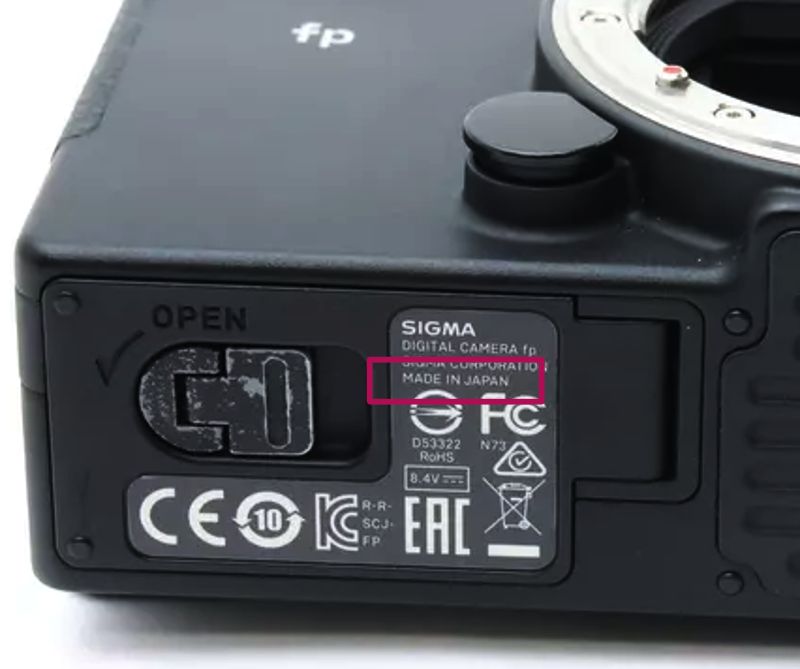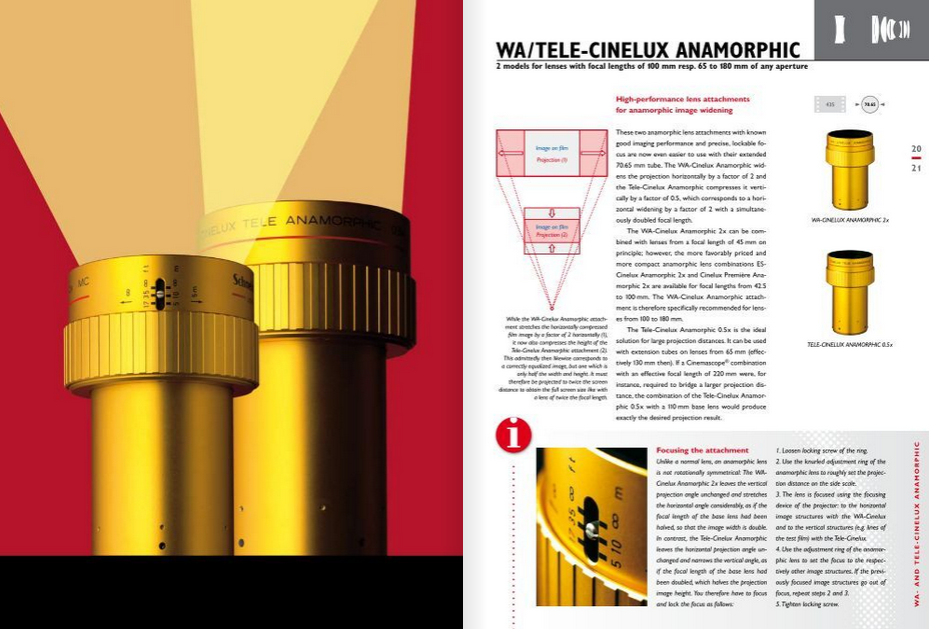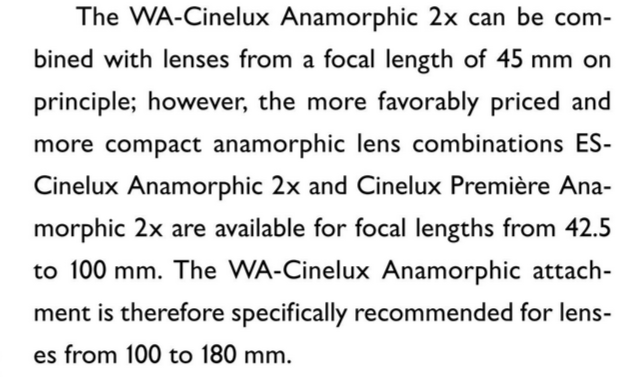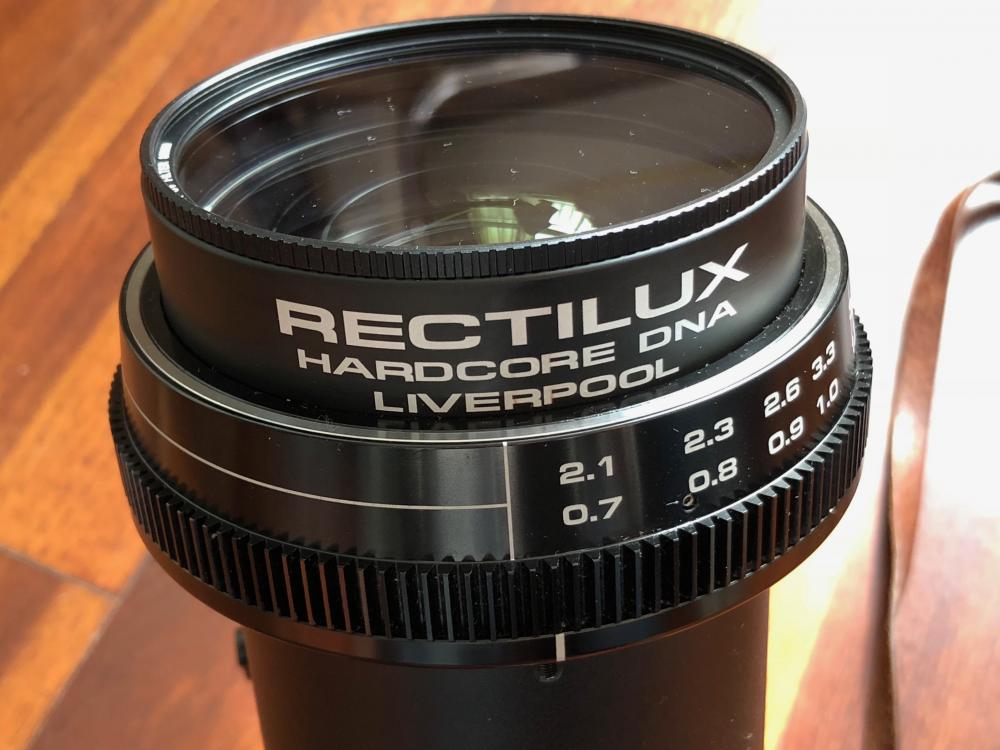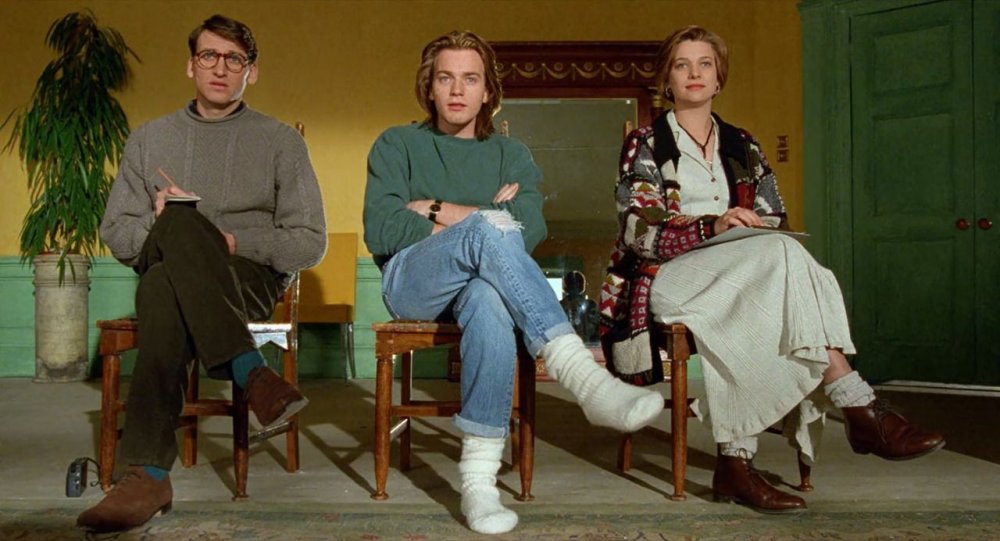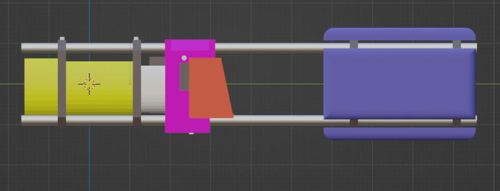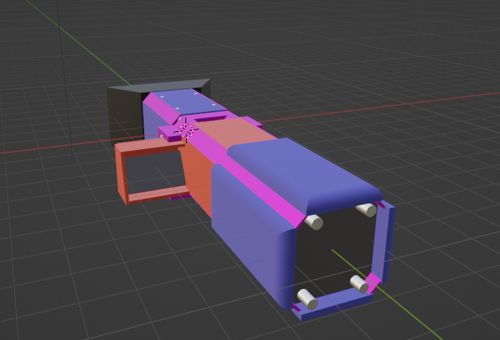-
Posts
30 -
Joined
-
Last visited
Content Type
Profiles
Forums
Articles
Everything posted by octoplex
-
Finally, a forum with a mission-statement I can get behind. Thank you!
-
The notion of "color grading" is largely a commercial-construct designed to create the job of "colorist" and to sell computer hardware and software. Movies made after the 1980s look consistently worse and worse, because the popular concept of "fixing it in post" has led a generation of film-makers to disregard the importance of proper lighting, story, acting, and set design. Something went very wrong in cinema after the mid-90s. Both socially and artistically. This degradation of quality in film-making coincided with three shifts in film-aesthetics: 1. The move from celluloid to digital. 2. The move from capturing a look based in 'reality', to color-graded footage. 3. An odd obsession with increased resolution. With increased-resolutions, the decay of cinema became even more profound: When an actor's face is shot in close-up at 8k, we are seeing a level of surface-detail to the human-face that we would NEVER see in reality. So, what is the 8k+ film-maker actually capturing? Cinema is predicated on our 'suspension of disbelief'. To intentionally shoot a film that cannot be believed, because it does not represent 'reality' in a way that we could possibly see, is anti-cinema. The Rise of Anti Cinema Through both malice, and incompetence, cinema has decayed. Before it can be saved, we must acknowledge the extent of this sickness, and then take steps to remedy it. We need to rely less on software, and more on our eyes, on set. We need to embrace imperfection, and return to capturing a plausible reality. We were better off when analog color-timing was the only post-production option for "grading" footage. Cinema can be fantastical, magical, or extraordinary, but it should never be unbelievable. Let's return to honest, practical effects; proper lighting; and artistry in set-design. It's time to stop color-grading. 25 Years of Madness Since the launch of the Sony F900, over 25 years ago, camera companies have been promising a digital replacement for analog 35mm film. For 25 years, they have been completely unable to deliver the 35mm analog look. Instead, film-makers have been expected to mess-around in computer software chasing an aesthetic that can rarely be achieved, and that the camera companies should have been providing as a default output. Why (given the equivalent lighting, set and actors) can no commercially-available digital video camera shoot footage straight-out-of-camera that properly emulates the Kodak 5247 and Kodak 5254 color-negative stocks? These stocks practically defined cinema as we knew it, but they do not exist as digital equivalents. We got scammed Why must young film-makers wade about in a swamp of technical-nonsense, graphics cards, manuals, color-grading, and hardware chasing the look that an off-the-shelf roll of 35mm stills-camera film would have delivered instantly, for five-dollars, in the 1960s, 70s, and 80s? Why can't these stocks be delivered straight off-camera? The camera industry has pushed responsibility for great video-capture onto the "colorist". The colorist is a symptom of decay in the camera and film industry; necessary only because of the technical failings of camera manufacturers, and their inability to simply deliver the replacement for Kodak stocks they promised over 25 years ago. The colorist is also a symptom of the decay in the excellence of artists on set. The Broken Promise of the Camera Industry We were promised film in a digital format. But, instead, the camera-industry redefined "film" as a sub-par version of itself. Then all the failings of this new medium were commercialized in a host of hardware and software to "repair" the damage done. Why is it so difficult for the digital-camera industry to care about creating an accurate version of the very medium that it claimed to be replacing? The digital "Cinema" cameras of today have almost nothing to do with cinema as we knew it. This is nothing short of fraud.
-
Sigma have delivered a masterpiece here. Two main reasons: 1. This is a camera manufactured by adults in Aizu, Fukushima, Japan. In today's camera market it is very hard to find products manufactured by adults in free countries. Personally, I only buy adult-manufactured cameras. 2. There's no on-board surveillance system. The Sigma BF does not have WiFi or Bluetooth soldered to its mainboard. Again, something that is increasingly hard to find. It's almost as if points 1 and 2 might be connected in some way. Something to meditate on... Aside from that. This camera looks gorgeous. 純粋に天才だ。 Could it be that ethics, and integrity of corporate-action, results in integrity, and beauty, of form? Something else to meditate on... Sigma BF for professional filmmakers? Fascinated to know what the rolling-shutter is like on the Sigma BF for video. Will it be possible to enable a global-shutter feature for lower-resolutions? Even if global-shutter on the Sigma BF is only possible for 1080p, I'd consider shooting a feature-film with it. Potentially, the BF is a perfect camera for Ethics-First Film-makers. I could see this new Sigma BF being the improved-reincarnation of the legendary (and sadly discontinued) 16mm Fairchild BMPCC OG, and the Bolex D16. A tool for real-artists. If Sigma is listening: Is there any chance of finessing your masterpiece by adding global-shutter for video? Even if only for a lower-resolution readout. Regardless, あなたの勇気と勇敢さに感謝する。
-
Having been part of this industry, with insider-knowledge on the tactics these people use, I can tell you that this is EXACTLY the kind of thing that happens. It's impossible to prove this level of malfeasance, and this is the reason why it is so effective. Remember that Google is a well-evidenced CIA-project. Google's objective online is 'intelligence'-harvesting and psychological-manipulation for power and profit. As you have noted, anything that competes with the CIA (Google)'s ability to gather information, censor voices, and manipulate public-opinion, becomes a target for infiltration. Vimeo was a serious-threat to power because it offered an independent, community-run information stream. It is the purpose of Google / the CIA to destroy human-community, where it discovers it, and to replace natural-conversation with top-down programming. Existing power-systems do not like the free-flow of information because it exposes their crimes. Freedom of speech is the antithesis of evil; therefore evil despises it at every turn. As Google's founders, the CIA, famously said: "We'll know our disinformation program is complete when everything the American public believes is false." - William J. Casey, CIA Director (1981)
-
Thanks for this great interview with Kazuto Yamaki and Takuma Wakamatsu. Here in 2024, we're still waiting for a major update to the Sigma FP, so I wanted to offer my thoughts to Sigma: Sigma is the only manufacturer making a cinema-camera in an ethical region (Japan). This makes their cameras VERY desirable to ethical filmmakers. Admittedly Arri (sort-of made in Germany...) and Sony (Indonesia) are getting closer. As a cinematographer, my suggestions for an update to the Sigma FP/FP-L are: - Add Global Shutter: Even if this requires a drop in resolution. Sigma could capture the entire market for ethical-filmmakers seeking a close-to-celluloid look. Rolling-shutter is over. Even if it's fast, it adds sub-perceptual oddness that does not replicate film. - Focus on film-looks: The post-processing market is big (Dehancer / Filmbox / LUTs etc) and there is an entire generation chasing the Kodak-Eastman stock that defined the 70s/80s golden-age of movies. Why not offer a camera that has been specifically designed to properly recreate this stock in hardware? In summary: Other cinema-camera manufacturers appear to have lost all sensitivity to the 'romance' of the image they seek to capture. I'm not sure what most video camera-companies are aiming for anymore. Some kind of super-sharp; hyper-resolute; bland-scrutinization of the 'real'; or so it seems. The result is ugly without extensive post-processing. Instead: Sigma could make a cinema camera that takes Eastman Color 5247/7247 film (or similar) as its benchmark. Sigma could refer back to the time when movies had SOUL, and use that as a starting point for a new ethos in the industry. A new wave of filmmakers are tired of spec-sheet-junkie-YouTube-streamer-cams and ten-billion-pixel sensors made for instagram-yuppies. Some of us are ARTISTS and want a cinema camera with "Made in Japan" ethics, and an image that prioritizes BEAUTY and GRACE; not pixel-counts and a bizarre-preoccupation with uncanny / creepy-levels of sharpness. We were happy with Super16. I hope Kazuto Yamaki is somewhere out there, reading this. Sending you, and everyone at Sigma, courage!
-
It's much worse than what I've described. Prostitution is entry-level blackmailing of "journalists". If you heard the full-story of what these consumer-electronics reviewers got up to in Tokyo and Las Vegas during my time at at a major broadcaster, you would be sick. The new-generation of YouTubers have a much bigger audience than those tech-journalists used to. The stakes are higher, and the kompromat system is in full-effect.. The major camera manufacturers are self-acknowledged child-slave-traders. They use children in the Congo [Reuters] to mine their lithium. They use child-slaves on their supply chains, without hesitation [Business Insider]. These same manufacturers are, at other times, ashamed of it. They obfuscate how their cameras are made. Red cameras say "Made in USA" but if you take one of their cameras apart, all the critical-circuit-boards inside are clearly marked with the logo of a well-known Chinese-communist manufacturer. Arri say their cameras are "Made in Germany" but they have a factory in China. Arri's China factory is producing... nothing. If you believe the label on the chassis. The entire camera industry is founded on a deceit: These manufacturers cannot even be honest about manufacturing in the slave-zone using children. They are child-abusers; and their products are fueled by the lithium mines. Hard to accept; and many here will struggle with self-awareness. Why does no major reviewer ever emphasize where these cameras are made? Because the camera (child-slaver) industry OWNS the reviewers. If you review a Red camera, and mention where the circuits come from, you don't get any more Red Camera freebies. If you review an Arri camera and mention where the circuits come from; or precisely which children mined the lithium: Blacklisted. Downranked by Google (YouTube) at the behest of the conglomerates who own both industries. If a journalist attends a launch party in Tokyo and gets themselves compromised, now they are moved up the Google ranks, and their videos are top of the results. Puppets get promoted. I was fortunate (unfortunate) enough to see this system from the inside. YouTube's backers (the corporations) will not promote 'influencers' they do not own. They only invest in compromised people. It's essentially the same as the political system. Watching YouTube and using Google eliminates a person's critical-faculties. If Google promote self-harm, most users will do it. As the last few years proved. YouTube is a psychological-manipulation tool: Advertising disguised as opinion. The camera-reviewers on YouTube are, mostly, behind the scenes, the advertising-wing of the same companies selling the cameras. Naturally, you will feel angry reading this, but consider using that anger to change the industry. It's time to wake up.
-
This is all just the tip of the iceberg. I used to work for a broadcaster who covered consumer-electronics reviews, including video-cameras, Many electronics-reviewers are compromised by the electronics-corporations at every level, up to and including, blackmail. I witnessed first-hand our 'reviewers' flown out to 'product launch' locations like Tokyo, and Las Vegas. Here many of them were pampered; loaded up on alcohol, and compromised (typically using adult-prostitutes, and worse). Once inducted into this 'club' of blackmailed journalists, these reviewers are 'groomed' for positions higher in the 'journalist' food-chain; one is now a presenter on a major television show for cars; others are scattered across the 'tech' field. The reviewer-scene is mostly puppets. YouTube (and the television networks) are advertiser-funded. The advertisers basically own them, and push their own (blackmailed) reviewers to the top of the rankings. You are the product YouTube sells to its customer: The advertisers / corporations. Remember, these camera companies have zero concerns about children working in the lithium-cobalt battery-mines; they certainly have no concerns about placing their puppet-'reviewers' across YouTube etc, and masquerading these puppets as legitimate independent-journalists. Almost everything you see on YouTube is fake.
-
You're absolutely right. The cost-savings that result from Apple knowingly using child-slave labor to manufacture the iPhone are incredible. Apple passes these amazing cost-savings straight onto the consumer, allowing Apple to undercut companies that use adults to manufacture cameras. This is why Apple is one of the richest companies in the world. Child slaves are pure profit for Apple, and the average consumer loves their child-slave-manufactured iPhone. Of course, the consumer is a surveillance-node; so also a kind of slave. In a way, it's perfect karma. Built by slaves; used by slaves.
-
UPDATE: I have managed to locate an old Schneider brochure from around the time this lens was manufactured. The Cinelux WA I have appears to have been a top-of-the-line item. The brochure may be of great interest to anyone else who is adapting a Cinelux lens of this era. This is good news, as far as the likely-quality of the lens goes, but there's not a huge amount of technical detail in the brochure. This is pretty much all it says about the WA edition:
-
The technical merits of Apple's new iPhone are irrelevant when two major factors are taken into account: 1) The iPhone is a surveillance tool. Their ARM implementation is a black-box. 2) Apple knowingly uses child slave-labor, as reported by Business Insider. This will likely be an unpopular perspective because, as consumers, we must live in a constant state-of-denial regarding the reason Apple is so profitable: Namely, that they are documented child-slave traders and exploiters. Personally, when I stack up the performance of the new iPhone's optics against, for example, an Arri, I have to bear in mind that the Apple camera-system is demonstrably made by child-slaves in communist China, and the Arri is made by fully-grown adults in Germany. I understand that others may have a different purchasing criteria, but for me the child-slavery thing is a deal-breaker. I like my cameras made by adults. Call me old-fashioned.
-
Incidentally, the reason why the length of the taking-lens is important in this type of adapted-movie-theater-anamorphic-lens set-up is because of the vignetting-risk. Wider taking-lenses are more prone to capturing a vignette because the field-of-view may partly reveal the housing of the anamorphic-block and/or the variable-diopter single-focus system. That said, this particular Cinelux WA anamorphic-block appears larger at the front element than the back element; I would speculate this slightly reduces the vignette-risk. Either way, experimental focusing should be possible, even with a taking lens which is not ideal (ie too wide). The issue would be the vignette. Without a variable diopter, and only a taking-lens, the Cinelux can only focus at a minimum of five feet. Or, at least, that is my understanding. Are you able to focus your FX3 on objects which are at least 5ft away using the taking lens and this Cinelux? To be clear, there should be 3 components in a single-focus solution with this lens: Taking Lens -> Anamorphic Block (Cinelux) -> Variable Diopter.
-
Hi Friend. I am still trying to figure out a solution. What have you tried? Why do you feel that a 75mm taking-lens is needed? Currently, I only have some 35mm taking-lenses and I don't yet have a variable-diopter system. I have not yet tested the anamorphic-block (Cinelux) at all. Interested to hear about your experiments. Perhaps we can guide each other towards an engineering solution for this Cinelux. I am also trying to get it to play nicely with a full-frame Sony camera.
-
There's a breakdown of production costs for the hit indie-movie Pi, here. Cost of shooting this movie was $60,927 Post-production costs matched this because it was shot on film. Today, that could be reduced. Pi made $3.2 million in US cinemas; despite limited release (68 theaters). That's excluding later DVD sales and foreign distribution etc. More interesting still: Pi is not a horror movie, it's a psychological-thriller. It demonstrated how good-story transcends everything; and that a $60k budget, good script, and strong team can propel you straight to the upper echelons of the industry. As Darren Aronofsky discovered.
-
Interesting to learn that Shallow Grave had that kind of production cost. I feel something comparable today could, in the right hands, be made for even less. I feel that Boyle did not have to make it for less; but probably could have. The apartment in Shallow Grave, for example, is probably built on a soundstage. It would be an interesting challenge to produce a movie of a similar scale today, without using soundstages etc and see how far a small budget can really go. The Shallow Grave script, in my opinion, is the nuclear-reactor of the movie, and I think it would endure even if shot in an actual apartment etc. Pi ( 1998, Darren Aronofsky; Production Cost: $134,815) could have been shot on the FX3 for half the cost and it makes me wonder why we aren't seeing more great alternative-filmmaking at the moment; given that the technology is now so accessible.
-
Good points. The marketing-push regarding it being shot on the FX3 seems somewhat inorganic to me, and I say that as a massive fan of the FX3. The other issue is that (based on the trailer) it does not seem like a movie that showcases the potential of the FX3 for low-budget indie filmmakers. This is on account of the dense, and expensive, SFX and post-production which does not represent features of the camera itself. I'm sure a breakthrough genuinely-indie movie shot on the FX3 will come soon. It is a very interesting camera.
-
UPDATE: I found this video showing how the Rectilux is physically put together, but what I'm struggling to understand is what the lens elements inside it are, and how would I go about salvaging closest-match lens components from (for example) wide-angle adapters etc — the larger, old Century Optics wide-angle adapters have been suggested to me as one potential donor source. Can anyone shed any light on this?
-
I want to build a variable-diopter to sit in front of a vintage anamorphic cinema lens. The best off-the-shelf solution is no longer manufactured. It was the Rectilux Hardcore DNA. Does anyone know approximately what lens components are in this thing? My plan is to salvage similar lens elements from other high-quality, second-hand-lenses and then machine my own helicoid etc for focusing. The problem is, I'm not sure what lens components I'm looking for precisely. Is there anyone here who can answer a few basic questions I have about the variable-diopter optics in this type of hardware? It would be greatly appreciated.
-
Absolutely this. A very insightful observation. I re-watched Shallow Grave (Danny Boyle, 1994) the other day. If anyone here is curious about what can be done with three good actors and an apartment, I'd definitely recommend revisiting this masterpiece. Shallow Grave is one of the most powerful demonstrations of how script, characters, and quality-of-acting can allow a low-budget filmmaker to out-shine anything Hollywood can muster. Shallow Grave was director Danny Boyle's (Trainspotting; 28 Days Later) first feature-film and stars a (then unknown) Ewan McGregor; who is stunningly adept as a young actor. Modern-filmmakers could benefit a lot by focusing less on technology and spectacle, and more on craft. The most valuable profits made by a movie are intangible: The extent to which the movie challenges, inspires, and changes society for the better.
-
Absolutely. Thanks for your kind response. You're right: those who harm others are typically adept at maintaining a public-persona that disguises the monster within. This is very freaky to witness at close-quarters. On a positive note: I am returning to the movie-industry, determined to challenge it through my film-making. This time I know the behavior-patterns of the 'vampires', and have even become a 'vampire hunter' of sorts. I have studied them carefully. To return to Nolan's work, I was pleased to read that he refuses to carry a 'smart'-phone, and writes his scripts on a computer that is not connected to the internet. Nolan also does not use social media (more specifically, we could say that social media does not use him.) I'm not sure how long Nolan has been doing this, but if it's a new policy, perhaps the Nolan of Memento and The Prestige will be slowly returning. It could take several years of concentrated work though. Definitely on the right track. The future looks bright.
-
Absolutely agree with this. The question, then, is: Do these directors become emotionally-disconnected from themselves because commercial-success is inherently disconnecting? Or, is something more specific happening in Hollywood? I ask this question from personal experience at the highest-levels of Hollywood. As a former-producer, I was assaulted by a person that most would recognize. The objective of this assault was to stop me making a film that threatened establishment interests; and to displace me from the industry as a whole. Without going into details, I have spoken with others who are also aware that a (it's hard to find a more appropriate word for it) vampire-class roam Hollywood and will target some filmmakers. Those they cannot control, they try to destroy. Fortunately, some they cannot reach. Personally, I was led into the situation where I was attacked by a 'friend'. I was definitely not the only person they did this to. This is why I'm very curious about Hollywood directors who quickly went from high-art to barely-competent. Naturally, I cannot know if these directors simply got, suddenly and extraordinarily, very bad at an art-form they were previously excellent at. Perhaps that is it. My experience suggests that there is another way that this descent occurs: Artists who challenge and confront society through their filmmaking are targeted for harassment / traumatization. It's only now, years later, that I am returning to film-making. This time as an 'emerging'-cinematographer, and entirely outside the Hollywood system.
-
Agreed. And this has happened to several 'superstar' directors. The best examples of this are what happened with Darren Aronofsky and The Fountain (2006); George Lucas and every Star Wars prequel; and Ridley Scott and Prometheus (2012). What is so bizarre is that it is near-impossible to believe that the director of Alien (1979) was the same director who made Prometheus (2012). The same is the case with George Lucas: To compare Star Wars (1977) with The Phantom Menace (1999), poses some very serious questions about whether Lucas was actually the director of the original Star Wars. Or, demands that we ask: What was done to Lucas that later destroyed every artistic instinct in him? Imagine asking Eric Clapton, today, to play some guitar and discovering that he has forgotten basic chords. We'd have to ask either: Who destroyed Eric Clapton; or: Did Eric Clapton really record those original albums? Several movie directors deserve detailed questioning on this topic. Either way, something odd is afoot in Hollywood...
-
I set myself a challenge: To turn a lowly Sony FX3 video camera into a run-and-gun rig for shooting with vintage 35mm-movie anamorphic lenses from ISCO and Schneider etc. These movie-theater lenses are massive, but are great for video work. The problem is in mounting them. They need a taking lens at the rear, and a variable-diopter at the front. I'm in the process of designing and machining a new type of cage for the FX3 (and other similar cameras). As you can see in these basic renderings, the FX3 body will be 'caged' in a purple-anodized exoskeleton. This is bolted to the camera body using all available mounting-points (there are several). This allows the addition of four, strong aluminum rods. These extend in both directions perpendicular to the camera body. On the front-end, these rods allow various lens-support struts to be added. On the back-end, they allow a shoulder-rest to extend out. With suitable counter-weighting, these massive ISCO and Schneider lenses can be used in a run-and-gun style set-up: It is especially important to me that this rig can be knocked about during shooting. Like you, I am tired of flimsy camera set-ups that look like they're made of Frankenstein-parts. I'd like a camera rig that has some coherence, style, and durability to it. For this reason, I've slightly over-engineered everything for high-durability. The Sony FX3 sits inside a tank-like, milled-aluminum exoskeleton. The on-board fold-out display is protected by a stainless-steel 'hood' section. Personally, I'm not a fan of adding external-monitors to these cameras. The on-board display is more than classic 35mm movie cameras ever had. Onto this entire rig-framework, outer panels are attached, giving the system a waterproof, protective covering, and cleaning-up the look: I am now working on a parametric CAD model, and will be machining prototype parts this month. I'm interested in any feedback from the community here. Colors in the models are for clarity, the finished rig will be a neutral palette 🙂 My interest is not in whether you like the rig or not, I'm more curious about whether I have overlooked anything vital in the design. Thank you!
-
🙂Ha 🙂 Gladiator was certainly an interesting anomaly in Scott's steady descent. It was undeniably 'good'. As was Ridley Scott's much-overlooked Matchstick Men (2003). But the troubling thing is that Gladiator could have been made by any functional-director with a big-budget. Gladiator was, at heart, a remake of Kubrick's Spartacus (1960). Scott was known for his originality when he first entered the scene. That quickly evaporated. The Ridley Scott who made Alien and Blade Runner seemed to vanish somewhere in the mid-80s, and has yet to re-appear. It's puzzling. He transitioned from genius to merely functional. As did many others. Back to Nolan: He seems to have trodden a similar path: Nolan excelled in his craft early on and then had all his originality and talent sucked out of him by vampires at Los Angeles pool parties (merely speculating). Same with Darren Aronofsky... Someone should make a movie about this phenomena.





